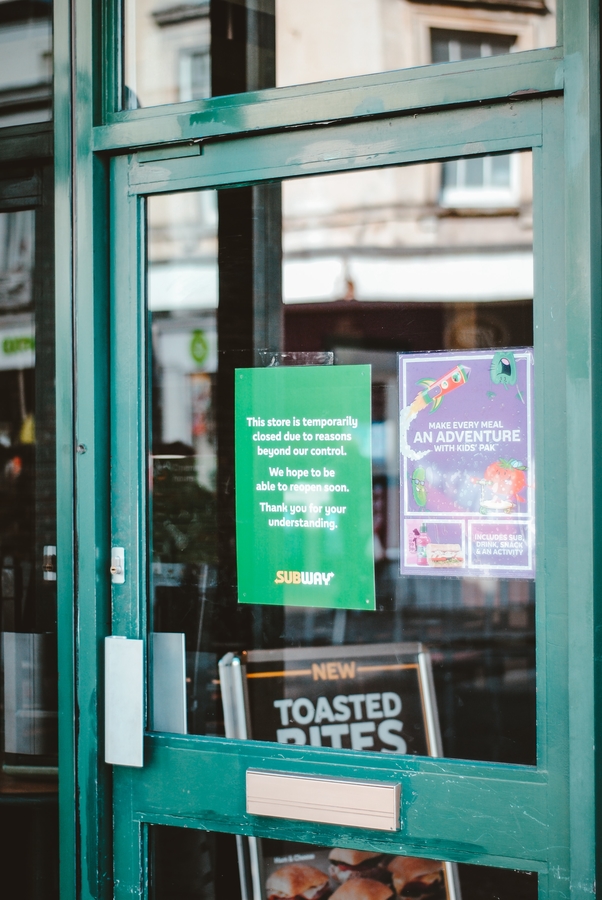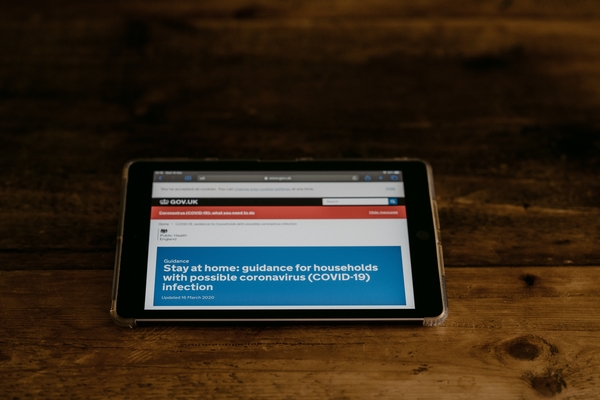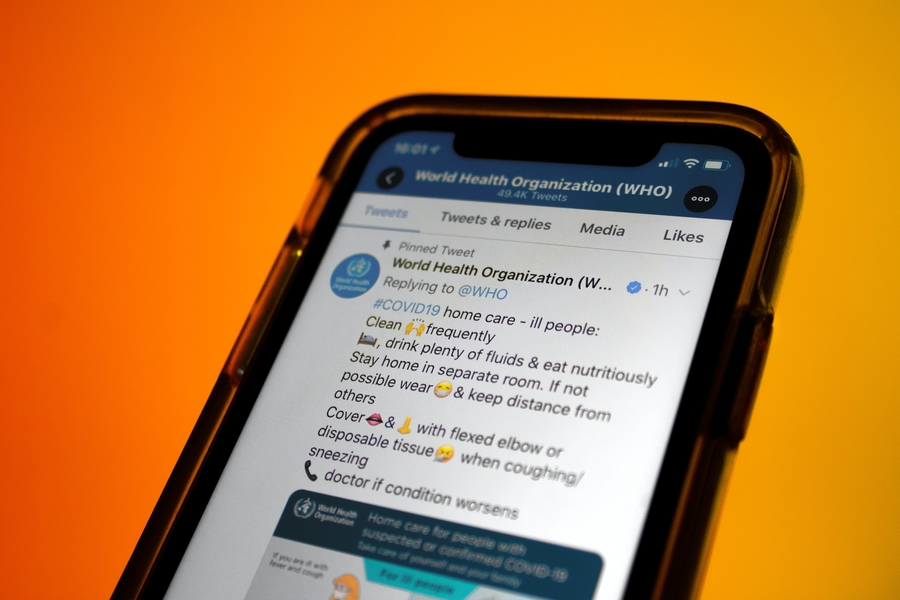As the global pandemic continues to reshape society, business owners must recognize these 7 reasons eCommerce grew 23% during the 2020 recession.
This figure comes according to data from a recent Nasdaq report which states, “Per eMarketer, U.S. e-commerce retail sales are expected to jump 23% this year.” It asserts that retailers who fail to recognize new shopping patterns and change with consumer needs will be left in the dust. Meanwhile, innovative competitors will see new heights of profitability.
Surviving this economic crisis requires that you do more than throw together an online store and add frequent posts on social media. To truly thrive, you’ll have to be flexible, enlist qualified help, and offer your customers enjoyable, omnichannel shopping experiences!

Side note, if you’re looking for an elite agency to partner with us at Tekli, one of Greenville SC’s leading digital agencies, would be happy to hear from you.
#1 Stay-at-Home Orders Upset Established Patterns
With public officials across the country issuing stay-at-home orders, citizens are turning to new methods of purchasing goods and services.
In fact, in its article “How COVID-19 Is Transforming E-Commerce,” Forbes Magazine cites, “Just over 306 million Americans are affected by stay-at-home orders, nearly 95% of the U.S. population.” It also states that “There’s been a 129% year-over-year growth in U.S. & Canadian e-commerce orders as of April 21 and an impressive 146% growth in all online retail orders.”
In short, traditional shopping methods are no longer as effective since brick and mortar locations present unprecedented health risks, and customers are turning to innovative solutions like online grocery shopping to meet essential needs.
According to Business Insider’s online grocery report,
The coronavirus pandemic has brought online grocery — a promising but formerly niche industry — to the fore. The combination of consumers’ interest in avoiding public places, government orders to stay at home, and the continued need for groceries and essential goods has made online grocery delivery services from the likes of Walmart, Amazon, Target, and Instacart indispensable.
People who had previously preferred picking their own produce and perusing store shelves are now shifting their strategies to avoid hassling with store safety restrictions and to mitigate risks.

An article for CNN Business titled “Coronavirus Will Change the Grocery Industry Forever” supports this theory by stating, “Downloads of Instacart, Walmart’s grocery app and Shipt increased 218%, 160%, and 124% respectively last Sunday compared with a year prior.”
These statistics speak to the nature of the human spirit; even in times of hardship and uncertainty, people find a way to adapt and create access to the things they need. As the saying goes, “Necessity is the mother of invention,” and invention means change.
#2 Consumer Habits Changed

Another common saying suggests that it takes someone 21 days to form a new habit, but Huffington Post piece “How Long Does It Actually Take to Form a New Habit? (Backed by Science)” breaks down why that notion is inaccurate. In reality, the number of days you need to settle into a new routine varies from person to person, but the average number is about 66.
According to the article,
A study examined the habits of 96 people over a 12-week period. Each person chose one new habit for the 12 weeks and reported each day on whether or not they did the behavior and how automatic the behavior felt. . . . At the end of the 12 weeks, the researchers analyzed the data to determine how long it took each person to go from starting a new behavior to automatically doing it. . . .On average, it takes more than two months before a new behavior becomes automatic — 66 days to be exact.
Why is this information relevant to how the 2020 recession changed ecommerce? For many American consumers, the amount of time already spent in quarantine has already exceeded 66 days, meaning their new buying patterns and online shopping habits are solidifying.
Moreover, it is unlikely that things in retail will be reverting to a state of normalcy anytime soon.
The aforementioned Forbes piece echoes this idea, commenting, “Stay-at-home orders will eventually be lifted state by state, but in the interim, there are millions of consumers creating and reinforcing new online buying behaviors and habits.”
What business owners need to accept is that recent data suggests these trends are likely to favor an omnichannel shopping experience and ecommerce platforms over traditional retail, so making a profit without an effective online presence has become nearly impossible.
#3 Online Orders Surged
An organization called COVID-19 Commerce Insight reports U.S. retailers’ online year-over-year revenue growth is up 68% as of mid-April, surpassing an earlier peak of 49% in early January. It also notes, “This is a good sign for the industry and an indicator that the average ticket value is higher now than earlier in the quarter.” All that to say, numbers have steadily increased and are unlikely to stop.

Journalist Jeff Cox with MSNBC agrees in his article “U.S. May Retail Sales Surge 17.7% in the Biggest Monthly Jump Ever,” It seems that consumers are moving on from the spending hesitancy that marked the beginning of the current health crisis. As Cox reports,
Retail sales alone powered 16.8% higher from a month earlier, more than double the estimate of 8% from Dow Jones and reversing from a revised 14.7% plunge from the previous month. Clothing and accessories stores reported the biggest percentage gain at 188% while sporting goods, hobby, musical instruments and book stores rose 88.2%.
The government numbers, released an hour before the start of stock trading, added to an upbeat mood on Wall Street, with Dow rising more than 900 points in the premarket. By late morning, stocks were up more than 500 points.
All indicators point towards the fact that, although 2020 changed eCommerce, those changes may turn out to be positive for retailers who position themselves to seize this opportunity in innovative ways.
#4 New Demographics Engaged
For example, online retailers now have access to a whole new demographic of older customers who have only recently joined the digital community.
Again, Forbes confirms, “‘We are seeing a larger percentage of customers over the age of 60 that are coming online,’ said JJ Fleeman, chief e-commerce officer for Ahold Delhaize in the United States, which owns brands like Stop & Shop, Food Lion and the online delivery service Peapod.” Researchers are seeing seniors emerging onto the ecommerce scene as the desire to stay home drives flexibility.
The previously cited Nasdaq breakdown titled “ETFs to Benefit From Surge in E-Commerce Sales” reflects similar data, stating, “12.2% [or ecommerce] growth [is] coming from older buyers in the age group of 65 and older. The surge would follow a 14.9% gain in 2019.” It’s undeniable that the pool of online shoppers is expanding, not only among older populations, but also across the board.
The critical point to be made here is, of course, that while these new users may have bought into the ecommerce space as a means of attaining necessities, now that they are online, it will be less difficult for retailers to reach them. It’s a goldrush in terms of customer acquisition and conversion!
#5 Priorities Have Shifted
To fully understand the potential online retailers have to gain new customers during this time, you have to consider the full scope of how the 2020 recession changed ecommerce. People are not just trying to avoid going to brick-and-mortar stores; they are also trying to convert their living spaces into home offices, schools, gyms, recreational facilities, and more.

Neela Montgomery, CEO of Crate & Barrel affirms that, for many, achieving these goals requires buying supplies during her interview with NPR radio station KUOW in a segment called “The Future Of Retail: How The Coronavirus Is Changing Shopping Habits”(Minute marker 14:30- 13:00).
She explains,
We’ve seen a remarkable shift to our online business. Our online business has been trading up, maybe 80-100% since March. . . .We’ve shipped over half a million packages, and really that’s been driven by a few things.
We’ve seen a big shift with the kitchen with everyone being at home and cooking, especially baking. We’ve seen a very big rise in kids products, not just desks as people were setting up for home schooling, but just making their environments for their children as pleasant as possible.
In recent weeks, we’ve also seen a lot of movement in the outdoor space as people as they get ready for better weather and strive to make those environments in their homes as comfortable, attractive, and inspirational as possible.”
In essence, consumers are not only looking to purchase more things online; they are also looking to purchase different products than they had previously, opening the door for new retailers to step in and offer goods and services that might not have been as in-demand before the pandemic. Instead of shopping for formal work attire, carts are filled with workwear, craft supplies, wireless headsets, workout gear, and more!
#6 Ecommerce Opportunities Emerged

There are two key components that will ultimately determine a business’ success in the wake of the ways 2020 changed ecommerce: the concept of first sale and an omnichannel presence.
First Sale
Repeat customers are the lifeblood of retail as retention costs are much less expensive and much more profitable those of customer acquisition.
Keep that in mind as you consider that a Neilsen report called “COVID-19: Entering A New Norm In Consumer Behavior” describes how “75% of online grocery shoppers still shopped with their first-ever online provider, per a survey from Bain and Google from 2018. So, the grocers that meet the most consumers’ needs during the pandemic will likely lead the industry even after it subsides.” This pattern will likely show true for retailers in other markets as well.
As an ecommerce business owner, you want to position yourself to make a sale first, and to do that, you have to rank high on search engines, advertise on social media, post blog content, build backlinks, etc. You have to find ways to surpass your competitors, or you’ll be left in the dust.
Omnichannel Presence
Barbara Kahn, professor of marketing at the University of Pennsylvania’s Wharton School and author of “The Shopping Revolution: How Successful Retailers Win Customers in an Era of Endless Disruption” gave her thoughts on the subject as another guest on NPR’s previously noted radio segment. She explained,
One thing that characterizes the difference between the winners and the losers is, I believe, is an emphasis on omnichannel retail, so people no longer think of retail as online/ offline. They think of it as a seamless integration between the two.
The bigger chains like walmart and amazon are much better integrated between online and offline. The smaller retailers and the retailers who are struggling are not as integrated, and that is going to be a trend going forward that I think you’ll see separating the winners and the losers (Minute marker 30:30-29:36).
The trouble is that many smaller retailers, even the ones who were fortunate enough to have built ecommerce stores prior to this health crisis, don’t know how to use their online platforms effectively. These business owners aren’t skilled in the art of search engine optimization.
They don’t know much about 404 pages, html, alt text, backlinks, keywords, site maps, bots, analytics, algorithms, or anything else related to search engine optimization.
#7 Digital Marketing Value Skyrocketed
Partnering with a knowledgeable company like Tekli is no longer a luxury; it’s essential. Our specialty is ecommerce, and it makes up between 50-75% of our client base. Generating real results for stores is what we’re all about! We offer a range of ecommerce digital marketing services:
Search Engine Optimization
Using research-based keywords specific to your business and target audience, we can direct traffic to your site and help you move up the ranks on leading search engines.
We perform a full-scale audit of your site to find out what aspects of it are not being properly interpreted by search engine bots, and then we help you make adjustments to optimize those areas for peak performance.
Then, we tailor a plan to boost sales and SEO through blogger outreach, backlink building, and content strategy. We’ll help you integrate across Facebook, Google, Apple Maps, Instagram, and other platforms.
Plus, we even help you reach customers through Siri and other voice search technology.
Digital Advertising
We want to make sure that your money is always well spent, and this means generating new leads in whatever way is most effective for your business model. Our in-house algorithm allows us to place ads where they have the highest impact.
This algorithm works by ensuring campaigns spend as little as possible unfruitful search terms, keywords, demographics, and ads. As a result, many of our clients experience 7x to 15x returns on their ad budget after working with us from 6-12 months.
We use Bing, Facebook, Google Adwords, Instagram, AdRoll, and other proven platforms to enhance your business’ exposure.
Moreover, we don’t believe in smoke and mirrors. With Tekli you get transparency. For that reason, we do advertising a bit differently. When you work with us, you’re signing on to have each dollar spent carefully tracked all the way from click to sale.
Web Development
Our motto in terms of web development is “On Time, Under Budget”, and we’ve got plenty of experience helping clients navigate eCommerce platforms like Shopify, Magento, WooCommerce, WordPress, and Joomla.
The Tekli process is thorough, and for a more detailed explanation of what you can expect from us, click here. For now, it suffices to say that we take our time with clients to make sure you understand why we are making the decisions that we are, so you can be most informed and profitable.
We do things right from the outset to avoid unnecessary complications in your future. We research developers and plugins that will be most beneficial to your store goals, and we prioritize accuracy with regards to maintaining your brand integrity.

Final Thoughts
As you weigh the cost-benefit analysis of signing on with Tekli, remember this final thought: According to a report by Quantum Metric, “Online conversion rates increased 8.8% in February, reflecting a level of shopping urgency typically seen during Cyber Mondays.”
There are plenty of profits to be had, despite the reasons the 2020 recession, as eCommerce grew 23%; however, your online store might not be posed to capitalize on all this opportunity if it’s not performing at its best. We can help you change that!